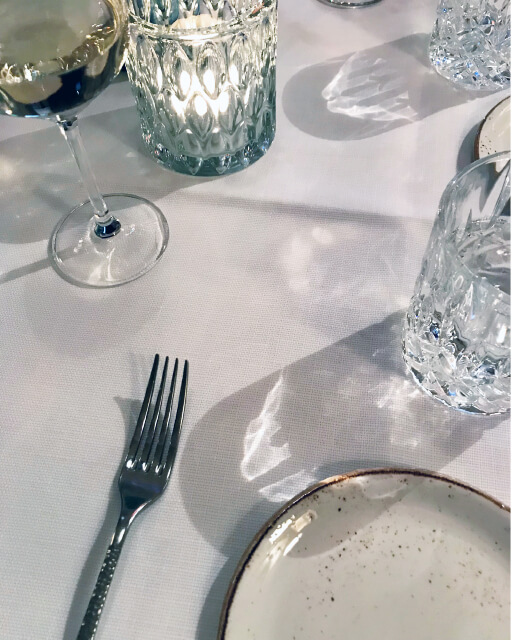That’s how you stay everyone’s darling
You order the wine, is the order of your boss,
who wants to focus entirely on the conversation with the client.
Or a social group would like to be responsible for the choice
of the wine to you.
stay cool These tips will help you make ends meet:
No discussion
If you have been asked to choose the wine, choose it confidently and without further questioning. Because the possible answers will not get you any further. On the contrary.
There’s a reason you’ve been assigned to order the wine. Order the wine with self-confidence and after studying the wine list, do not suggest any alternatives. Most at the table will be grateful that you are taking on this role.
First limitation
Try to get a first impression of the wine list with a quick cross-read to see which countries, regions and price ranges are available.
Stay local
The wines of the country or the respective wine-growing region in which one is located are almost always a good choice. Unless the meal takes place in a country where there is no viticulture worth mentioning.
With a local choice, you show a reference to the country and region you are in, and the choice is usually the widest.
However, you don’t need to be completely dogmatic about this. A neighboring country also makes sense if it is a classic wine country. For example, if you are unfamiliar with some of the excellent but mostly lesser-known Swiss wines, it is better to order a good wine from Friuli or Veneto that you know.
In this situation, however, it is better to do without the insider tip from a country that has not shone with excellent wines in the past.
The sommelier is her friend
A good sommelier is now your most important ally. However, he or she needs some information from you in order to give you the best advice. Give the sommelier some guidance, such as whether you want to choose different wines for a set menu or whether you want to drink one wine consistently.
On the wine list, point to whites and reds you know and would consider, then ask for a recommendation.
In this way, the sommelier has an initial assessment of the direction in which you would like to go and also roughly knows your budget. A good sommelier will now suggest alternatives that are in a similar price range and explain why these wines may be even more interesting or go even better with the food in question.
An experienced sommelier, who would like to win you over as a regular guest, will show you the recommended wines on the wine list. So you can see at a glance if the wine is on budget for that specific meal.
If the sommelier does not do this, but only describes the wine to you in lyrical tones, ask where you can find this wine on the wine list, for a subsequent discussion of the expense report, which includes a very expensive wine, or on concerned faces in the Round, if the bill is then to be shared, you are more than welcome to do without.
The restaurant does not have a sommelier
It is best to choose the wines that you can be sure that the majority of the guests sitting at the table will be satisfied with. When it comes to white wine, a good Riesling, Sauvignon Blanc or Sancerre is usually the right choice.
You should avoid Chardonnay or other types of white wine, which are often fermented in oak barrels. These can be excellent wines; however, the risk is too great that someone in your circle will react with a headache. So it’s better to go the safe route.
With red wines it gets a little more difficult. Because there are pure Pinot noirs, Merlots, Syrahs or Sangiovese wines. However, the majority of red wines are made from a combination of these grapes. In addition, there are certain peculiarities from country to country that require a deeper knowledge of wine.
When it comes to red wine, it is therefore usually safer to focus on wineries with consistent quality or to choose the crowd favorites like an Italian Barbera or a mid-range Bordeaux.
With red wines, it is advisable to choose wines that you know yourself or to describe to the sommelier very precisely what you are looking for.
A group of friends in the evening will certainly get along better with a very heavy red wine than a business meeting that would like to have a glass of red wine at lunchtime but would like to have a reasonably clear head again quickly after lunch.
nose, eyes and mouth
In this order. We get the most extensive impressions of a wine through the nose.
Let the test sip gently circle in the wine glass and initially concentrate exclusively on the smell. If the wine has cork, you will smell it more easily than taste it. Everything else is also easier to discover through the nose.
Does the wine smell light and elegant or is it rather broad or alcoholic-bitter in smell. The first impression is not wrong. If you don’t like the wine, don’t be shy, say so straight away, try to explain and ask the sommelier for a different wine.
If you’re not sure if you’ve spotted cork, ask the person who served you the wine to taste it themselves to be sure. There are cases of doubt and only in top restaurants can you be sure that the sommelier himself has checked the wine for cork beforehand.
In all other restaurants it is better to ask discreetly at this point before the rest of the table becomes aware of this discussion or even before the wine has already been served, all glasses have to be collected again and exchanged.
Only 20 percent of all German wines are closed with a cork made of cork oak. Here it can happen that mold has gotten into the wine with the cork. On the other hand, since the traditional cork allows a certain exchange of air, which favors the aging of wines, it is still used in the bottling of many high-quality wines from France and Italy.
The color of the wine, the way it behaves on the wall of the glass, tells you a lot about the quality of the wine. Is the wine slightly sparkling, does it form narrow, pointed arches or does it slide down the glass rather slowly, almost oily?
The sample in the mouth then provides additional information as to whether the finish promises what the start promises. An excellent wine has both: a good start and a good finish.
Always my pleasure
Be happy when you are asked to choose the wine for the round table. There is a good chance that this role will fall to you more and more often. And the more wine lists you read and compare, the more knowledge you will have and the greater your ability to assess a restaurant in this easy way.
You will soon see at first glance whether the wine list contains only the usual standard repertoire of wines (usually a succession of successful wine distribution companies in the restaurant sector) or whether the wine list has been put together with ambition and contains lesser-known treasures.
This first check is also an important indication of how far you should follow the recommendation of the wine from the restaurant side or rather rely more on your own knowledge.
Last but not least, the chance that you can enjoy a good wine that suits your own taste increases exponentially when you choose it for the table.
Perhaps you get so much enjoyment out of judging wines that you apply for a Masters of Wine degree at HARVARD des Weines, the Institute of Masters of Wine in London. The most demanding training you can complete on the subject of wine evaluation. We would be happy to know a Master of Wine personally and to have one in our group.




